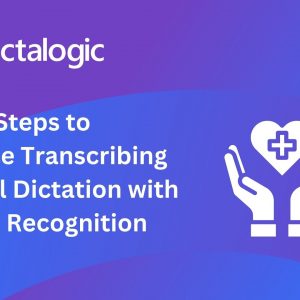Speech to text technology is a crucial tool for those who want their audio recordings transcribed accurately. This technology translates spoken words into written text, making it a valuable asset for journalists, academics, and medical professionals, among others. However, the accuracy of Speech to text conversion can be challenged by various factors such as background noise, accents, multiple voices, clipping or distortion in the recording, and technical jargon.
Background Noise:
One of the most significant challenges in Speech to text is background noise. It’s important to eliminate background noise when recording, or use noise-cancelling headphones.
Accents:
Another challenge is the accents, which can make it difficult to understand individual words and sentences.
Multiple voices in Recordings:
Another challenge is the presence of multiple voices in a recording, which can cause interference with each other’s audio signals.
Clipping of distortion:
Clipping or distortion in the recording can also reduce the effectiveness of Speech to text technology.
Technical Jargon:
Additionally, technical jargon can be challenging for transcribers to understand without additional research or context clues.
Despite these challenges, Speech to text technology has come a long way and is becoming increasingly prevalent. However, it’s critical to understand the limitations of the Speech to text service you choose, such as the ability to retrain the engine for improved accuracy.
Conclusion:
In conclusion, while Speech to text technology can increase productivity in some situations, it’s crucial to understand its limitations and potential challenges before making a decision to implement it in your business. With this information in mind, you can make an informed decision about the best Speech to text solution for your company while optimizing your website’s SEO with the keyword “Speech to text”.




